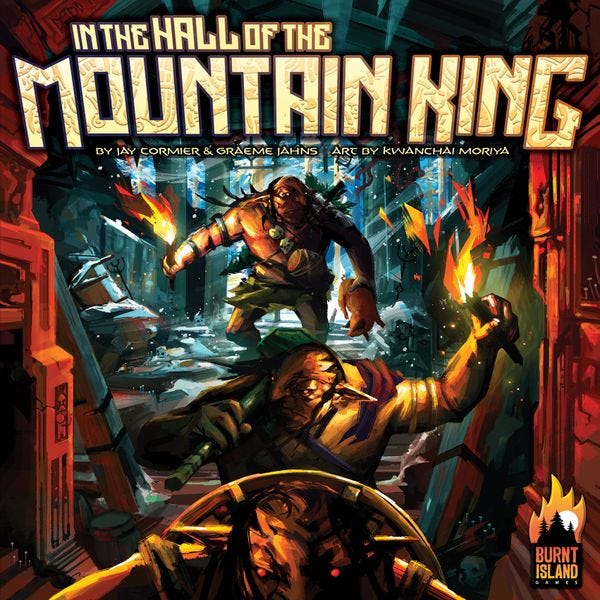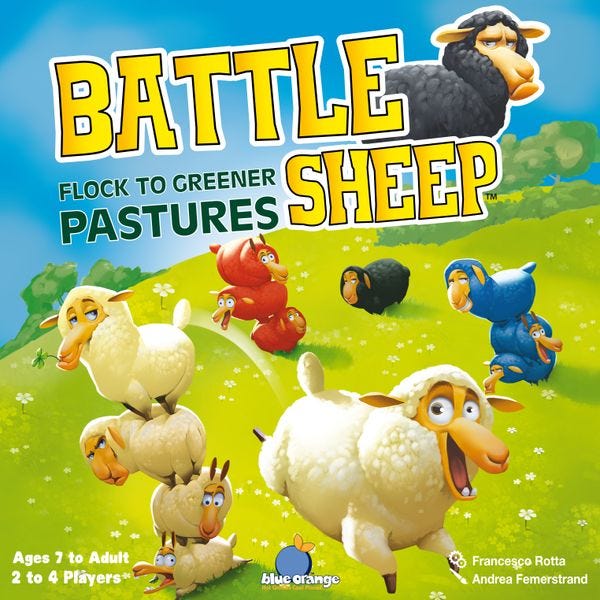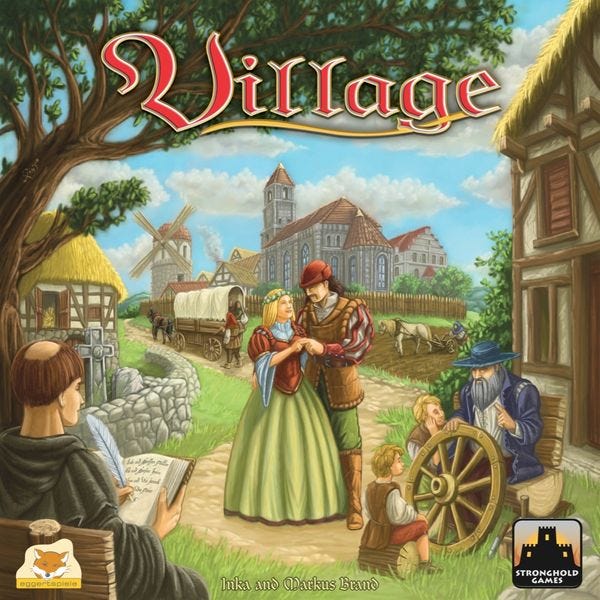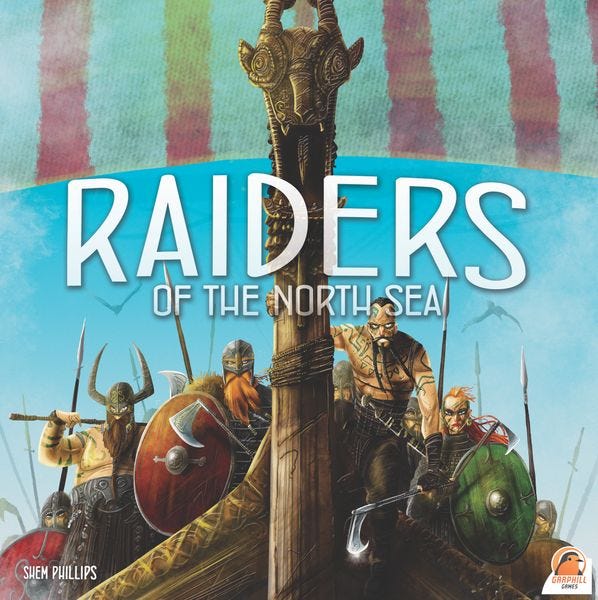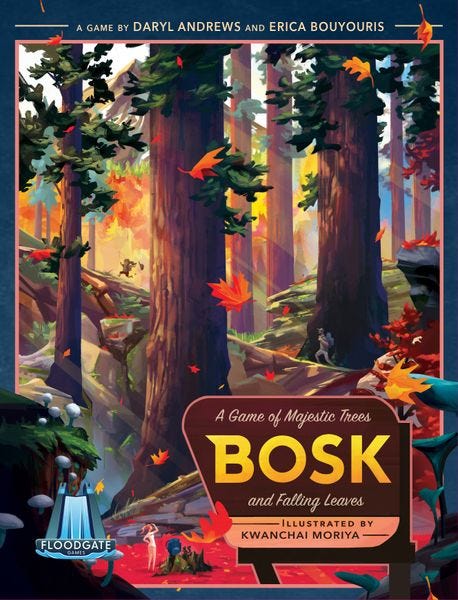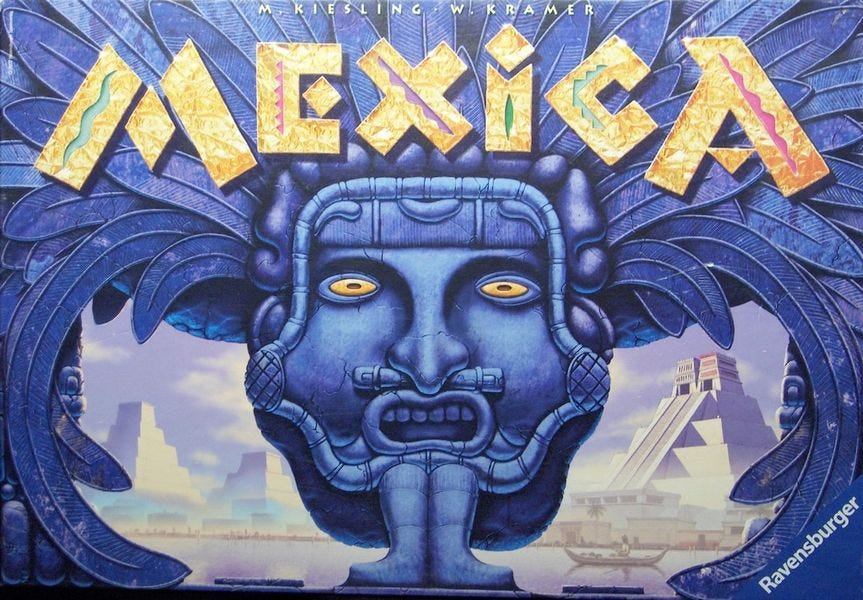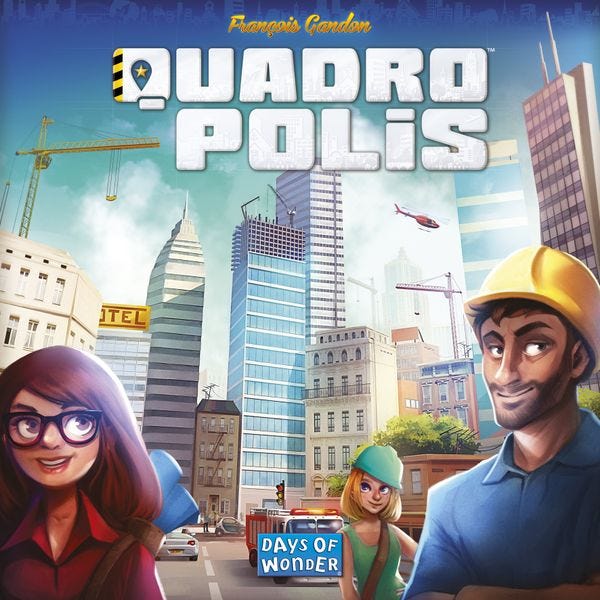This is the end of the first half, some classics and some rising stars have made their appearance, so we’re going to close this out strong!
60. Ascension
Players: 2-4 (best 2)
Time: 30 mins
BGG Weight: 2.14
Dominion kicked off a board gaming revolution by way of introducing deck building as a core mechanism. Ascension iterated on that by introducing a variable marketplace. Designed by Justin Gary, a Magic: The Gathering pro, Ascension has countless expansions and adaptations. It also sparked my love of deckbuilding.
Players start with a hand of apprentices and militia that they use to acquire better heroes, build constructs that last from turn to turn and slay mighty monsters. Once a pool of honor points runs out, the game finishes the round and whoever has the most honor (from card actions or on the cards themselves) is the winner.
I have played this game since it came out almost fifteen years ago. I play it daily via the app, have competed in tournaments both digitally and in person and have ongoing games with some of my friends. I’ve made friends through the game’s discord channel and it has helped me improve in almost every aspect of board gaming.
I don’t pull the cards out any more, because the digital adaptation is so great, but how can I not include a game that gets so much play time. I have 5,000 completed games in online play alone.
59. In the Hall of the Mountain King
Players: 2-5 (best 3-4)
Time: 90 mins
BGG Weight: 2.83
In the Hall of the Mountain King has players taking on the role of trolls, seeking to rebuild your abandoned kingdom. You’ll dig out tunnels and unearth statues, always working toward the heart of the mountain. Players can not cross the streams though! The game itself is fun, the spatial puzzle and resource management are serviceable. If that were all the game was, I would have played it once and moved on.
But, one of your actions is recruiting a troll. And when you recruit a troll, you add them to your pyramid. And when you add them to your pyramid they trigger a cascade of resources for every strand under them in your troll pyramid. It is still one of my favorite mechanisms in a game and I can’t wait to see more games implement it. You use those resources to help you build out your tunnels lay claim to territory on the board.
I think the game is a little long for what is is and can lead to unnecessary AP for players. If it came in around an hour, this would likely move into my top 25. Still, I manage to get it out because the thrill of my trollyamid is unmatched in any other game to date.
58. Battle Sheep
Players: 2-4 (best 4)
Time: 15 mins
BGG Weight: 1.46
Battle Sheep shouldn’t work. You’ve got a stack of sheep that you can split however you want and then move one half in any direction to the end of the line. When they hit a border or another stack of sheep, the stop. Your goal is to completely down stack, while blocking other players from being able to do the same. If two or more players are able to do it, well, whoever has the biggest connected area wins.
The game is simple but vicious. This is a cruel game. Area control in its most base form with cute, grass chomping sheep as the weapons. Players start the game by building out the game board and it’s fun to see what area you’re playing in today. Games go so quick that you’ll play it over and over again. Blue Orange recently had another print run, so a game that can be hard to find is available again. This is one that I don’t see ever leaving my collection. It’s a hit any time it comes out and players of all skill level can enjoy.
57. Village
Players: 2-4 (best 4)
Time: 60-90 mins
BGG Weight: 3.07
Village was my first introduction to the worker placement genre and one of my first Euros as well. Previously, I had played Catan and Carcassonne. I hate the former and love the latter, so my opinion on euros was shaky at best. Inka and Marcus Brand would come to prominence with Raja of the Ganges (which I own, but still haven’t tabled), but Village was a revelation for me when I played it the first time.
As the head of a family in a small village, Village really nailed a sandbox feel early. You have many different paths to glory in your small town and the game has a unique time mechanism. As time progresses, workers will die. A worker from the oldest generation must die and if they are one of the first of their job type to die, they will have a place of notoriety in the history books. How far to push your workers and when to tempt Death himself is a clever twist on worker placements.
I find myself becoming attached to certain workers, despite them being generic meeples. The thematic integration really clicks for me and it does a good job of simulating small town life. Should I venture out into lands unknown, become a man of the cloth or a political leader? And I need to make sure they make their mark before someone else dies in role and steals that precious glory.
56. Architects of the West Kingdom
Players: 1-5 (best 4)
Time: 60-80 mins
BGG Weight: 2.75
I like Shem Phillips games. The New Zealand designer has unique takes on games and every one of his plays differently. While the North Sea trilogy found him experimenting with different styles with a Viking theme, the West Kingdom finds him digging into Worker Placement in Western Europe. I have not played Viscounts yet, but Architects is by all accounts the most accessible of the three games in this set.
Each player is a contractor working to build a cathedral. The game starts with a massive pool of workers, with a catch. One of the actions is gathering all the workers from a space. A player can hold onto those meeples or deposit them in jail on a later turn. Effectively holding other player’s pieces prisoner. There is also a virtue track that is affected by player’s choices in the game.
In my most recent game of this, I was out harvesting other player’s workers and utilizing the black market to gain resources to aid my quest in being the top architect. I claimed the top cathedral spot, but narrowly lost to a better builder. I was also the most pious at the end. It was a thrilling race. The game also encourages villainy. One of the main worker spaces is robbing the tax stand.
He’s currently working on a South Tigris trilogy, but I did not enjoy Wayfinders as much.
55. Pandemic Legacy: Season One
Players: 2-4 (best 4)
Time: 1 hr
BGG Weight: 2.83
Pandemic is, to this day, one of the biggest successes in board game history. I would by lying if I said I didn’t play it religiously for years. It helped usher in a modern era of co-op games and laid the framework that so many other games built off of. I am also sick to death of it.
When Risk Legacy hit the scene, it made a tired game fresh and popular with people very deep in the hobby. What would happen, then, if it were applied to a game with better mechanisms? The resulting Pandemic Legacy reminded my why I loved the original so much. The game plays mostly the same, with the big change being permanent changes to the game state. There are a bevy of story beats that come out over the course of the game and modify how each session starts.
Win or lose, the game goes on. Losing gives you some catchup mechanisms, but gives you a more punishing game state at the start of your next play through. It still suffers from some of the quarterbacking issues present in all iterations of the game, but for me this is the best way to play the game. I would even tell people to start here over the original as you can learn the game with Legacy before diving into the campaign.
54. Raiders of the North Sea
Players: 2-4 (best 3)
Time: 60-80 mins
BGG Weight: 2.55
Shem Phillips, that name looks familiar! This was my first exposure to his games, Adrianne picked up a demo copy from One Eyed Jacques during a sale. The worker placement/retrieval mechanism was hard for me to wrap my head around the first time I played it. I had not, at this point, played Tzolk’in so this was my first exposure.
The fact that anyone can pick up any worker from the mainland was also revelatory. These are communal workers, something else I had never encountered before. Players work to store resources and hire crew to go raiding on more and more valuable targets and unlocking more powerful workers for the collective pool. Valkyries will take warriors to Valhalla and certain crew members reward you for raiding certain targets.
The game feels dynamic due to the variable nature of set up, but the majority of the information being open keeps the game from feeling unfair. Raiding gets you valuable resources that allow you to hit the stronger targets and a dice roll determines how successful you are on your raids. They very rarely fail, but it can be worth it to push for a higher value target if you’re close and the dice can get you the numbers you need.
We do own Raiders of Scythia, which is supposed to be the best way to play this game, but I love the base game so much I’ve never felt the need to move beyond it. I do think he has a better game, but we’ll get to that on another day.
53. Bosk
Players: 2-4 (best 3)
Time: 20-40 mins
BGG Weight: 2.07
Bosk almost singlehandedly killed Photosynthesis for me. We still play it occasionally, but Bosk gets the tree warfare process in a more compact package. It plays faster, is easier to explain and has a more interesting game state for me. In the first half of the game, you’ll compete for control over different rows and columns by planting trees of different values. Whoever has the highest value on each row and column scores points.
In the second half, the trees shed their leaves following whichever way the wind is blowing that turn. You’ll spread leaves to claim different colored areas and whoever has the most leaves in an area scores that area. The game scales well at all player counts and cleanup is a part of the game play. I can’t be mad about that. The trees give the game great table presence and playing leaves really makes you think about what your best course of action is.
This is one of my favorite filler games, as it plays so quick you can knock out a game while waiting for others to finish their game. Set up and break down are so quick and the rules are so easy to teach that we could have already started in the time it took you to read this blurb.
52. Mexica
Players: 2-4 (best 4)
Time: 90 mins
BGG Weight: 2.69
One part of Kiesling and Kramer’s Mask Trilogy, Mexica is the only one I’ve played. Tikal is purported to be the best, which means I’ll probably be a fan. Mexica is, much like Kramer’s El Grande, an area majority game. You move around a board creating districts and building buildings that give you control over those districts. You have a pool of action points every turn and how you spend those dictates how well you’ll do.
While the game is not on the level, appearance wise, of modern games, I’ve not found many that tackle area majority as well as Mexica. When you close off a district matters as it scores points immediately, the game also has two scoring rounds that get more tense as the game goes on. There is nothing multiplayer solitaire about this game, you’re in direct competition for limited space.
The theme isn’t terribly strong here, so if you’re not a fan of abstracts this might not be for you. Depending on the version you find the art might not be the best either, so if that’s what you’re looking for, look elsewhere. If you want a game with fantastic mechanisms and some of the best area majority around? Well, dig right in.
51. Quadropolis
Players: 2-4 (best 4)
Time: 30 min-1 hr
BGG Weight: 2.2
This game should probably be higher, if I’m being honest. The only thing keeping it down is how much other people would rather play a DIFFERENT game that shares some mechanisms. That said, I love, love, love Quadropolis. Players draft from a 5x5 selection of tiles by placing a worker numbered 1-4 with an arrow point the direction you’re drafting.
You’ll take the tile that is that number down, across or up from where you placed the worker and add it to your city. A city that is a 4x4 grid. A quadropolis, so to speak. Some tiles will let you build upward as well, which gives you more space to play with.
There’s some resource management and adjacency bonuses depending on how you place the buildings you drafted. The real joy for me in this game is the draft. How do you get what you want while other people are locking you out of spaces you need to get the tile that completes your city?
In case you missed it:





